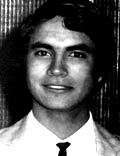 Francisco Marin, author of 'El Doble Asesinato de Neruda' (Ocho Libros, 2012), has given me permission to translate his article for the benefit of an English speaking audience. Here is the chance to access a direct Chilean source regarding a vital stage of investigations into the suspicious circumstances of Pablo Neruda's death.
Original source: http://www.elciudadano.cl/2013/06/06/70422/caso-neruda-todos-los-dardos-apuntan-a-draper/
On Wednesday 5th May, lawyer Eduardo Contreras presented a letter to Minister Mario Carroza, together with copies from the Chilean and Brazilian press 'confirming the strange behaviour of Dr Sergio Draper throughout this judicial investigation, who attended to Neruda in his final hours - something which, in our opinion, must be subjected to investigation'.
Francisco Marin, author of 'El Doble Asesinato de Neruda' (Ocho Libros, 2012), has given me permission to translate his article for the benefit of an English speaking audience. Here is the chance to access a direct Chilean source regarding a vital stage of investigations into the suspicious circumstances of Pablo Neruda's death.
Original source: http://www.elciudadano.cl/2013/06/06/70422/caso-neruda-todos-los-dardos-apuntan-a-draper/
On Wednesday 5th May, lawyer Eduardo Contreras presented a letter to Minister Mario Carroza, together with copies from the Chilean and Brazilian press 'confirming the strange behaviour of Dr Sergio Draper throughout this judicial investigation, who attended to Neruda in his final hours - something which, in our opinion, must be subjected to investigation'.
One of these publications is 'Jornal de Brazil' dated 24 September 1973, which published Neruda's death as front page news, delivered by journalist Paulo Cesar Arujo and photographer Eandro Texeira, reporting from Chile a few hours after the poet's death.
It is reported that Dr Draper established Neruda died in the Clinica Santa Maria on September 23 at 22:30, 'victim of a chronic urological infection and phlebitis'. The newspaper was discovered by Brazilian journalist Frederico Fullgraf, who gave a copy to Contreras. Draper's declarations are in severe contradiction with the other media narratives and judicial authorities dealing with the death of Neruda.
On the second anniversary of Neruda's death, Chilean newspaper La Tercera published an article entitled 'Last Moments and last words of the poet Pablo Neruda', written by the journalist Orosmel Valenzuela, who is also quoted in 'El Doble Asesinato de Neruda' by Francisco Marin and Mario Casasus.
Draper, who is presented as the doctor at the Clinica Santa Maria who attended to the poet 'until the last moment', suggests that Neruda died of cancer; also that he heard Neruda's last words, uttered five hours before dying. Neruda allegedly complained of the alleged prostrate cancer and requested Amidone, which Draper says he agreed to in order to decrease Neruda's pain. After uttering his last sentence, Neruda fell into a pre-comatose state and failed to regain consciousness.
However, justice imparted a totally different version. As noted in 'El Doble Asesinato de Neruda', Draper states, 'I remember on Sunday September 23 1973 I was on duty in the Clinica Santa Maria, and around 15:00 I called the nurse on duty; allegedly Maria Araneda Aguilera, who informed me that Pablo Neruda was in pain. I immediately went to his room and greeted his wife Matilde Urrutia. Quickly I read the instructions left by Dr Roberto Vargas, which stated that intramuscular dipyrone should be administered in case of pain. Then I saw Neruda, a dying patient, suffering from anasarca (extreme swelling caused by oedema) and with a possible pathological fracture of the femur (product of metastasis). Immediately I contacted the aforementioned nurse, giving her instructions to administer the medicine intramuscularly.
The doctor stated that he retired in the evening of that day, leaving the alleged 'Dr Price' to do his round. The next day upon arriving at the clinic, Draper learnt that Neruda had died the night before.
Draper made a second judicial statement, adding that Dr Price told him that after Neruda's death, he had lifted the bed covers to prove to Matilde Urrutia that nothing suspicious had happened at the time of the poet's death.
Sergio Draper describes Price as a man with short, slightly wavy, blond hair, who was never again seen at the Clinica Santa Maria.
In view of the contradictions which Draper incurred, Contreras raised questions in his judicial writing. 'Until when will these abundant lies and contradictions be allowed to distort the sense of expertise? What were the reasons then, which are still rendered valid now, driving the dictatorship to give different versions regarding the cause of death of the poet? What do you fear will be discovered?'


